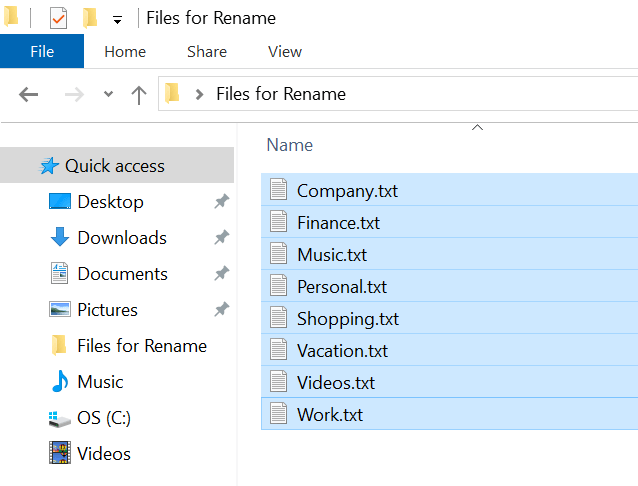

If someone sends you a document they created using Pages on an Apple Mac, there’s a good chance you won’t be able to open that document on your Windows system if you can’t see the file’s extension, there’s no way of knowing it’s a Pages document and thus it’s hard to figure out why you’re having problems. Not everyone uses the same software nor the same operating system. The file extensions can also help you figure out why you can’t view or edit a file.exe extension, you almost always want to avoid opening it, once again to avoid malware. If you receive an attachment in your email and see the. exe extensions lets you know you’re dealing with a program. vbs extension tells you you’re about to open a Visual Basic script which will run commands on your computer – one way that malware can strike. The extensions also help you spot files which may be dangerous to open.Yes, the little file icons help, too, but those icons aren’t always easily identifiable. ppt extension on the presentation helps you see which is which at a glance. xls extension on the spreadsheet and the. For example, if you have an Excel spreadsheet named 4th Quarter Budget and a PowerPoint presentation also called 4th Quarter Budget, seeing the.
 The extensions help you distinguish between similarly named files. Those extensions tell you the type of file you’re dealing with and which type of program you’ll need in order to view or edit the file. Being able to see file extensions is a good thing. This supposedly makes things less confusing in fact, it’s a piece of paternalistic boneheadedness. Microsoft has been hiding file extensions from users in version after version of Windows. jpg image files and rename the first one Dad’s Birthday, you’ll end up with files named The filename of the last file you clicked will be selected.Įach of the files will be renamed, with sequential numbering used to distinguish one file from another. You can select a group of contiguous files by click the first one and then Shift+clicking the last one you can select any number of files by Ctrl+clicking each file or to select all files in a folder, press Ctrl+A. To change a whole batch of files at once: It’s a small change from the previous method, where you had to manually select the filename before editing, but it saves a lot of time. Type the new filename and press Enter. Windows automatically selects the filename so that anything you type will replace the existing name. Click the file to select it, then click once more. It’s easier to change filenames in Vista and Windows 7 than in previous versions of Windows.
The extensions help you distinguish between similarly named files. Those extensions tell you the type of file you’re dealing with and which type of program you’ll need in order to view or edit the file. Being able to see file extensions is a good thing. This supposedly makes things less confusing in fact, it’s a piece of paternalistic boneheadedness. Microsoft has been hiding file extensions from users in version after version of Windows. jpg image files and rename the first one Dad’s Birthday, you’ll end up with files named The filename of the last file you clicked will be selected.Įach of the files will be renamed, with sequential numbering used to distinguish one file from another. You can select a group of contiguous files by click the first one and then Shift+clicking the last one you can select any number of files by Ctrl+clicking each file or to select all files in a folder, press Ctrl+A. To change a whole batch of files at once: It’s a small change from the previous method, where you had to manually select the filename before editing, but it saves a lot of time. Type the new filename and press Enter. Windows automatically selects the filename so that anything you type will replace the existing name. Click the file to select it, then click once more. It’s easier to change filenames in Vista and Windows 7 than in previous versions of Windows.






 0 kommentar(er)
0 kommentar(er)
